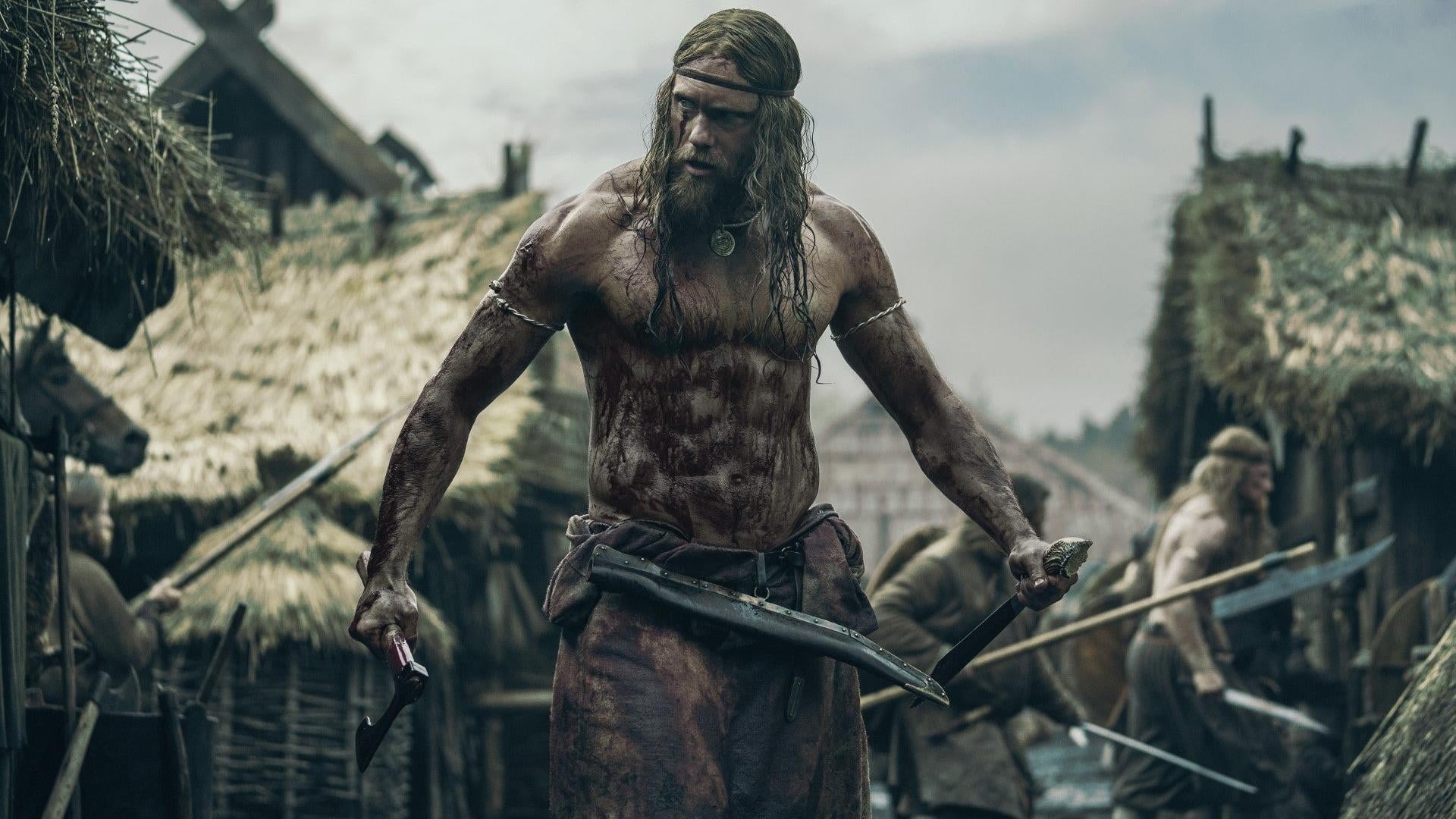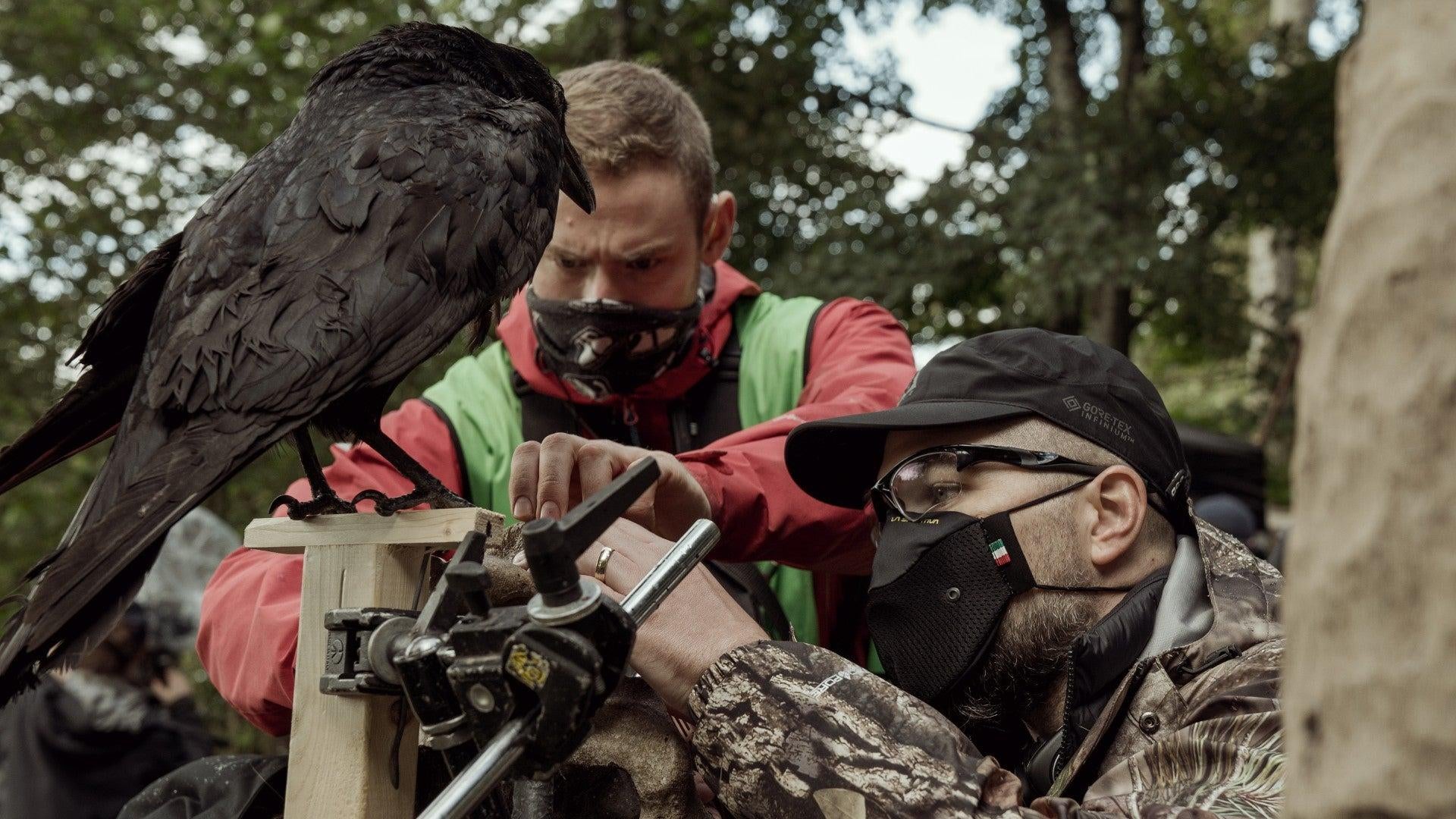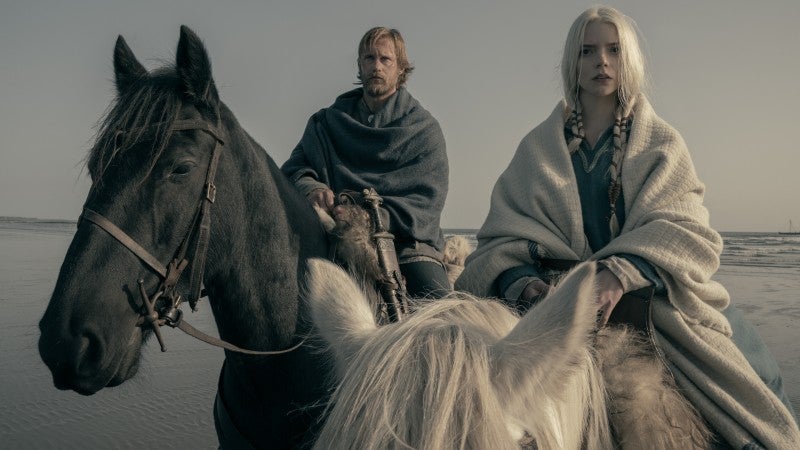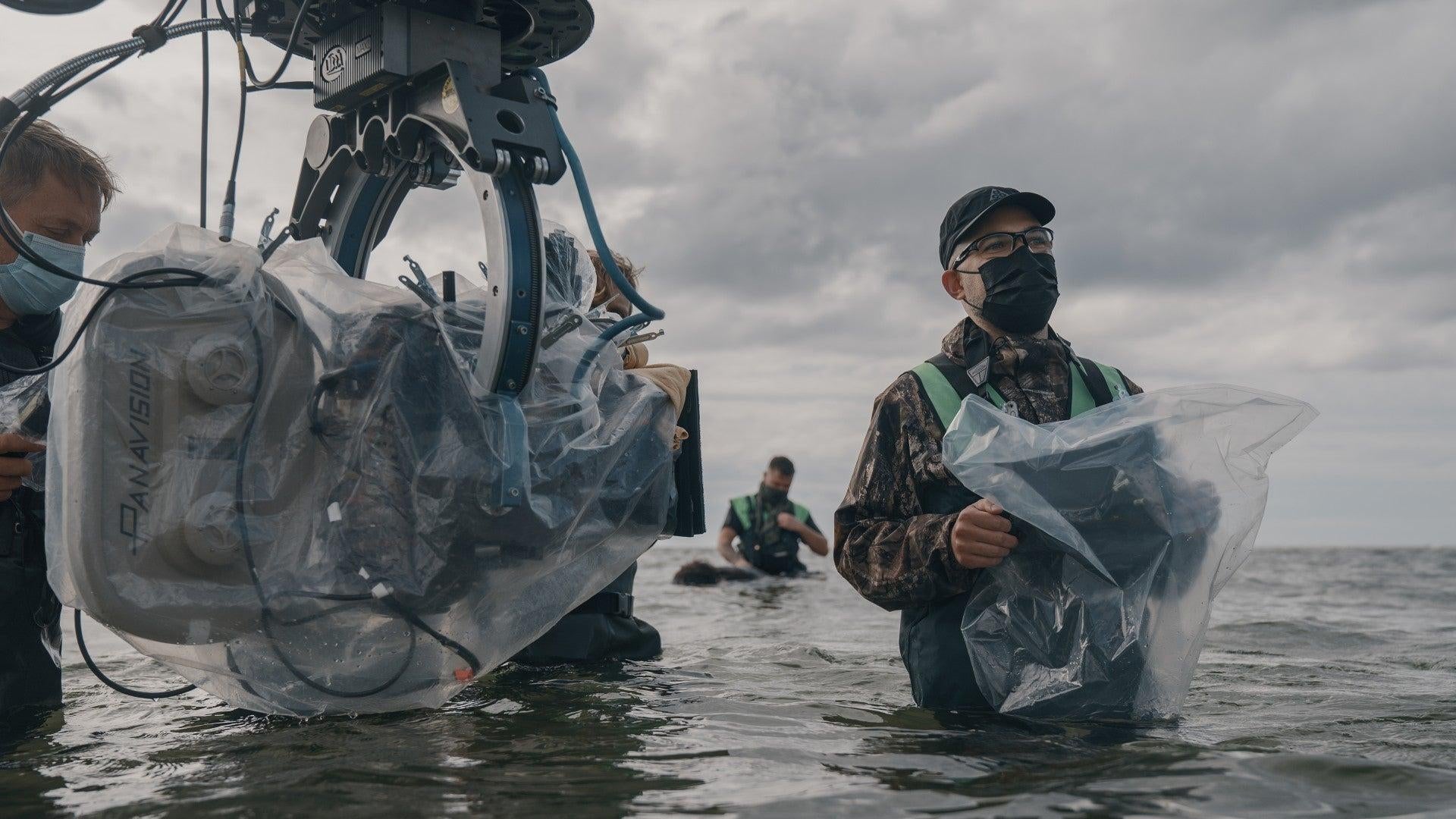These days, no one makes movies like Robert Eggers. From The Witch, to The Lighthouse, and now with The Northman, the filmmaker starts his process almost like you would a school project. Libraries and experts and research, research, research until he has the pieces he needs to make a fantastic, historical genre film that’s completely based in reality, but not at all real.
The Northman, in theatres Friday, is all that and more. It’s Eggers’ biggest film yet, it’s his most accessible, and everything you see in it that seems impossible has some basis in reality. Or, at least, someone’s reality. In this case, it’s the entirety of Viking history, which Eggers dove into to find inspiration for a familiar tale he could tell in a whole new way: the tale of a prince (Alexander Skarsgård) who watches his father and king (Ethan Hawke) murdered. He then disappears, only to come back years later seeking revenge. It co-stars Anya Taylor-Joy, Nicole Kidman, and Willem Dafoe.
io9 spoke to Eggers via video chat last week about why he used that Shakespearan tale for the basis of his Viking epic, why there are so many supernatural elements in it, his development as a filmmaker, mummified horse penises (yes you read that right), and why before he even knew what The Northman was, he knew he wanted to end it with two naked men fighting on a volcano.
This interview has been edited for clarity.
Germain Lussier, Gizmodo: The Northman, like all of your work, is based on tons of research but ultimately is fiction. How do you go about mixing elements of reality and fantasy?
Robert Eggers: Everything that I do is research-based to the point where it’s boring to discuss… But the thing is, in the Viking age, there were no Viking atheists. The real world and the mythological world were the same thing. Odin Valkyries, trolls, undead warriors, they were facts. The Eyrbyggja saga has ghost seal attacks! Like, obviously! So that [sentiment] needed to be the same in the film. So I’m working with my historians and archeologists to create the verisimilitude of the physical world, but also the interior world. So if they’re believing in something, it existed, and it’s kind of as simple as that.
Gizmodo: So with all of those fantastic elements in play, how did you decide to make the backbone of The Northman a story that’s so familiar, rather than a little more unfamiliar?
Eggers: Sure. So basically, I didn’t know that Shakespeare read a story written down by a Danish historian called Amleth. And that was his inspiration for Hamlet. Amleth is a Norse folktale that predates Saxo Grammaticus, but it’s Hamlet. It’s The Lion King. And the great thing is having that story, a deliberately super-simple story that everyone knows, I can show audiences stuff they haven’t seen before about the Viking age and explore the mythological and religious and ritual culture of the Viking age. And with this bare-bones story, have important Viking set pieces. To have a Viking raid, to have the ships come home from a raid and have a celebration, to have a Viking funeral, but then to have the things that maybe people don’t know.
Like we all have seen enchanted swords that have to be won by a fight from their undead owner and maybe people don’t know that that’s a Viking trope, but it is. Maybe people don’t know about the Viking very bloody hockey-like game called Knattleikr, you know? There’s stuff that’s really prevalent in Viking tales that we wanted to put in that people might not know as well.

Gizmodo: I’m glad you brought up weaponry because I loved the Night Blade in this movie. The idea of a sword that could only be used at night is such a cool idea, can you tell me how that came to be?
Eggers: Well, enchanted swords play a big part in the sagas, and very often they are older. And the sword period, the Vendel Period before the Viking age, actually, I think, has cooler swords and armour. So it was a pleasure to do that because most of the swords are just flat-out museum replicas of archeological finds but Draugr the Night Blade is based on a few swords from an earlier period, including the Sutten Hoo sword. But yeah, it’s pretty cool.
Gizmodo: Yeah, it’s really, really rad. Now, with things like that and everything you just mentioned, it’s obvious you’re a fan of the filmmaking process down to the smallest detail. So what’s your favourite part of making a film? What’s the part that, when you finish it, you go “Now I have to make another movie just so I can do that again”?
Eggers: This sounds so lame but I truly like every aspect of filmmaking now. Like writing has certain magic because you haven’t done it yet, so it’s really great, that period of time. But I think because I come from theatre, the magic of production, when you’re working with the actors and it’s like happening and also, how lucky am I that for all my three films, I’ve got to make a whole world? So like I’m living in my own personal misery world [laughs] that I get to really enjoy being in.

Gizmodo: Right. “The Eggers-verse.” I love it. Now, I won’t spoil the exact ending, but I thought the final battle was literally one of the most beautiful things I’d ever seen. Take us through your ideas and process for shooting that finale.
Robert Eggers: Before I had a movie I thought “If I ever made a Viking movie it should end with naked sword fighting on a volcano.” And so I thought a lot about it, but me and my DP’s approach is always naturalism. And we found a quarry that looked enough like Mount Hekla and then Craig Lathrop, the production designer, brought in all this black earth to make it more like Hekla. Then Sam Conway and his team, the special effects, had giant, giant flames. I mean, we’re talking massive flames and all this black smoke and grey smoke and ash and cinders and all that stuff, all practically. Now the lava, we couldn’t do practically.
Gizmodo: Makes sense.
Eggers: But Jared [Manley] and Seamus Lynch, the gaffer, designed these LED panels that were dug into the Earth that were the shape of the lava streams. Then they were programmed so the light would move the way lava would move. So the light on the actors is working with them in this organic way. And then, Angela Barson, the effects supervisor, went to the recent eruption in Iceland and was photographing all this footage of the eruptions so we had really, really, really good references. So that’s why it’s a little more convincing than some other volcanoes.
Gizmodo: And you don’t know where that idea of a volcano fight came from?
Eggers: Just Iceland is like… it’s so elemental there. And I just imagined the first Icelanders sailing there and not dying and just having to be there with nothing. And so like the most elemental thing I can think of was a naked sword fight on a volcano.

Gizmodo: This is your third movie, but also your first… not straight action movie, but let’s say a “Robert Eggers action movie.” How would you describe your evolution thus far as a filmmaker? Where do you see or hope to you see yourself going in the future?
Eggers: Well, I think that the progression from The Witch to The Lighthouse makes a lot of sense. And if I had made like, you know, a third New England folk horror movie that was like a tiny bit bigger than that, that would have been a really natural progression. But that didn’t happen [laughs]. This was not a natural progression. This movie was massive in comparison to the other two films. And, I don’t know if that was wise, but like, it happened, and here we are. But the cool thing is, I learned so much about filmmaking, and so I’m eager to make a smaller film — not as small as The Lighthouse, but certainly smaller than this — and have my skills be in ship shape to do something that I can really get what is in my imagination onto the screen in a way that’s very satisfying for myself personally.
Gizmodo: Yeah, The Lighthouse and The Witch didn’t have LED lava. That’s a new tool in the toolbox.
Eggers: Indeed, for sure. But also there is a way in which I’m going to be like, “I want all this” and It’s like, “Well, yeah, you can’t have that because this is not The Northman, dude. Sorry.”
Gizmodo: We kind of joked about an “Eggers-verse” and I was wondering if a big corporation paid you way too much money and said you can make any movie in this any other franchise’s universe, do you have a franchise that you would do?
Eggers: No.
Gizmodo: Nothing. It’s just the Eggers-verse.
Eggers: Yeah, sorry.

Gizmodo: No, no, it’s fine. I get it. Is there a detail or two in this movie that a filmgoer will never, ever notice, even if they saw it 100 times, that you’re especially proud of or excited about?
Eggers: There is a þáttr, which is a short story, called “Vǫlsa þáttr” that is about a family that worships a mummified horse penis. And the idol of Freyr, his phallus, is a mummified horse penis in Iceland. [Laughs]
Gizmodo: [Laughs] Well, there you go. Didn’t notice that one. I mentioned how the ending of the movie really stuck with me, but the tracking shots in the first act are also incredible — what shot took the longest to plan and how long did it take to film?
Eggers: I mean, the raid of the village took by far the most planning because it’s the most complex and had the most elements. The most people, the most stuntmen, the most horses and goats, and all that shit. And I think it took four days, which is relatively short.
Gizmodo: You kind of gave Anya Taylor-Joy her first biggest boost to becoming a star with The Witch. Now, she’s back in this one and is incredible. Of course, there’s The Queen’s Gambit, and now she’s going to be Furiosa. What’s it been like to see her career trajectory and have played a part in that?
Eggers: I’m so proud of her. And she’s remained Anya and grounded and super cool, and it was a pleasure to work with her on this.
The Northman opens in theatres April 22.
